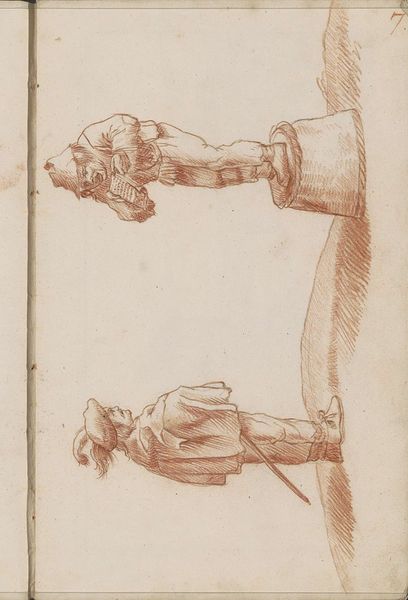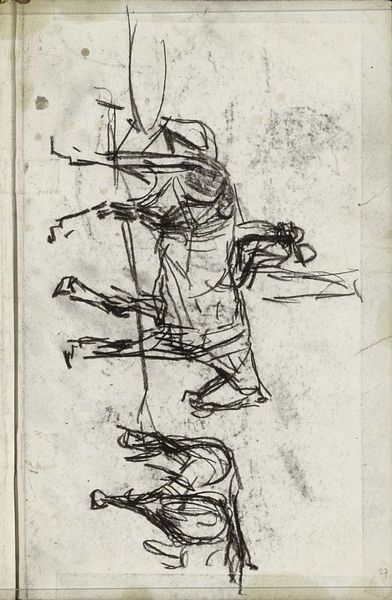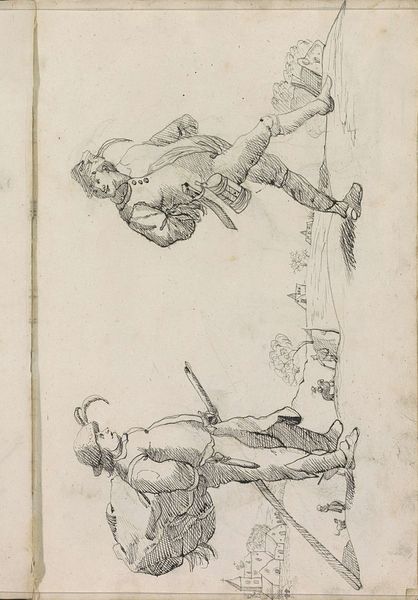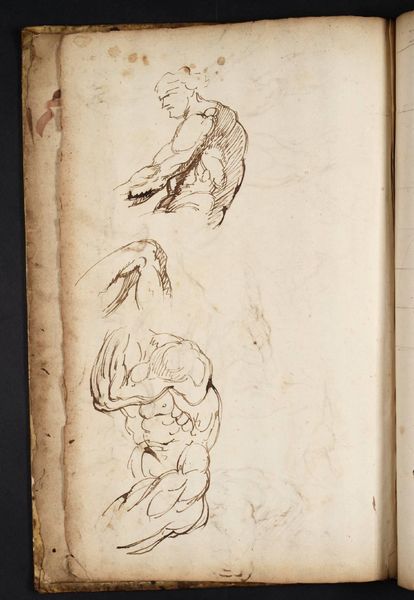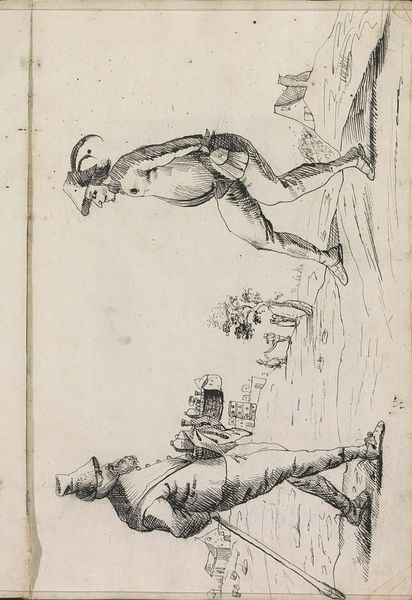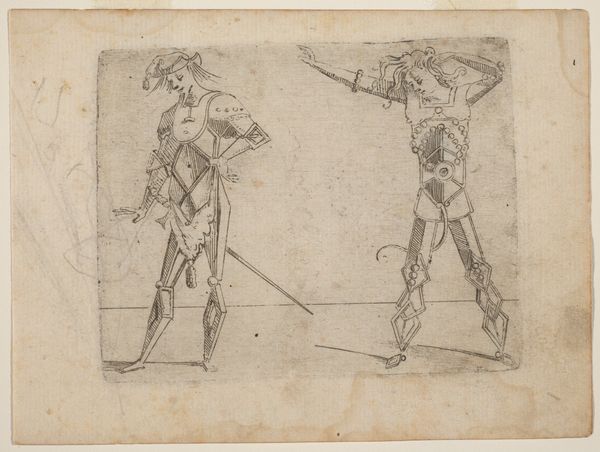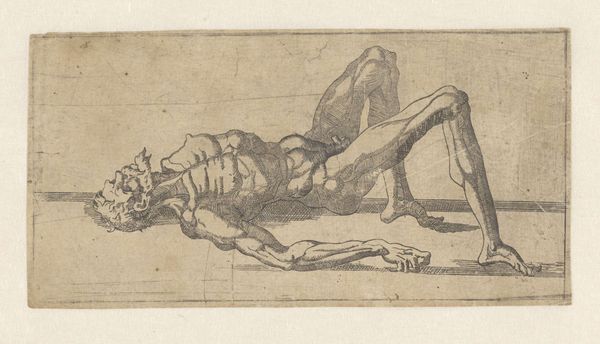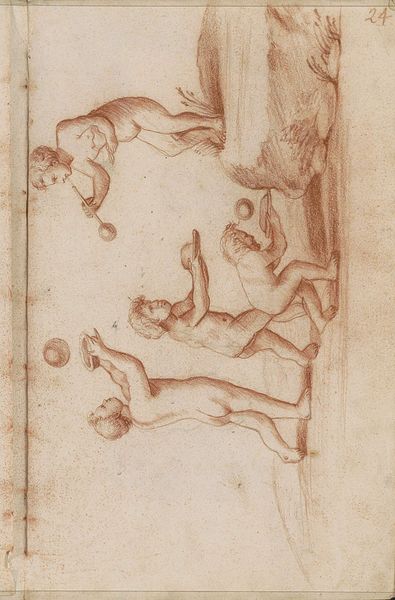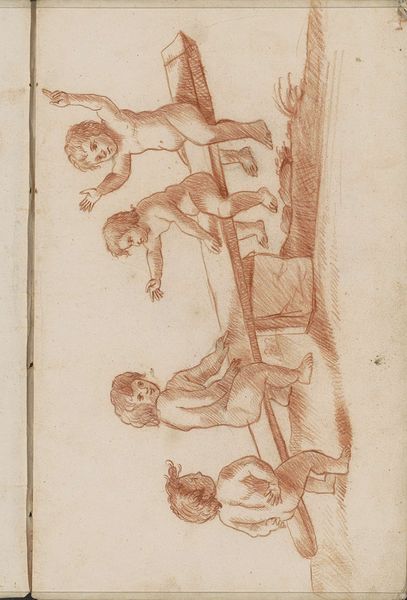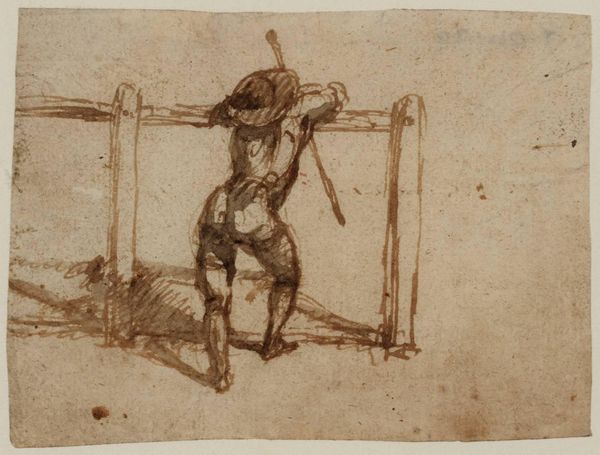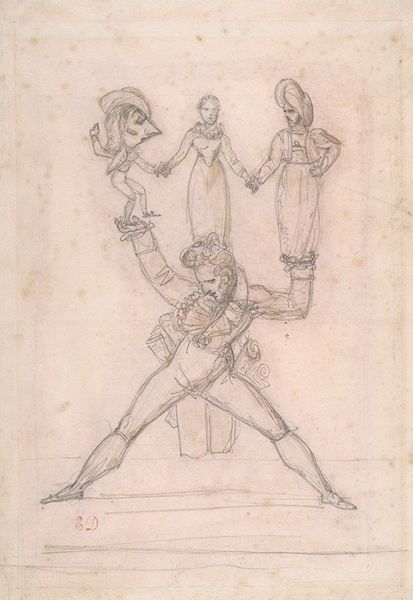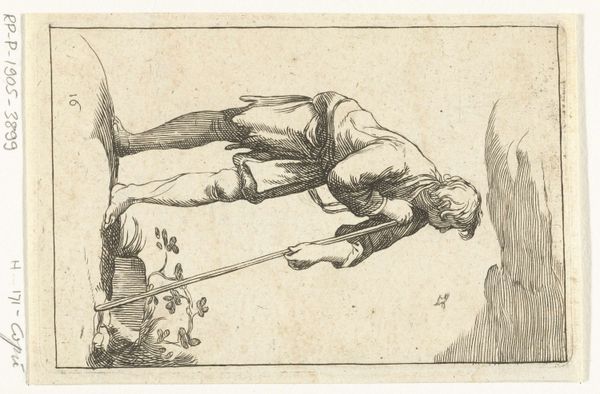
drawing, paper, pencil
#
portrait
#
drawing
#
baroque
#
pencil sketch
#
figuration
#
paper
#
pencil
#
line
#
genre-painting
Copyright: Rijks Museum: Open Domain
Editor: Here we have Hendrick van Beaumont's 1696 pencil drawing, "Man steunend op een stok en een man met de handen op de rug." The figures feel a bit cartoonish, almost floating on the page. What do you see when you look at this piece? Curator: I observe the stark lines etched into the paper, defining two figures in isolation. The use of line, seemingly simple, in fact dictates our reading of form and depth. Consider the upper figure: the implied curvature of his back and limbs comes solely from subtle shifts in tonal density achieved through the pencil strokes. It’s an exercise in minimalist representation. Editor: So it’s about how little Beaumont uses to convey so much? Curator: Precisely. Note also the texture implied by the hatching on the figures' clothing, a contrast to the smooth expanse of the paper around them. The paper is as much a part of the composition as the graphite itself, creating a tension between the depicted and the void. Editor: The composition is interesting too – almost like two studies placed together, unrelated. Curator: Indeed. Their disconnection invites speculation. Are they intended to be characters in the same narrative, or simply studies of posture and expression? The relationship hinges purely on their shared visual field, not any explicit narrative connection. The very open nature of this work’s semiotics begs the question – does it imply an intrinsic relation or are we inclined to seek cohesion in disparate elements? Editor: I see what you mean. I originally just saw them as a humorous, separate sketches but considering their relationship through form is an intriguing reframing. Curator: This reveals how crucial it is to analyse form – line, texture, composition, not as ancillary features, but as primary drivers of meaning.
Comments
No comments
Be the first to comment and join the conversation on the ultimate creative platform.
